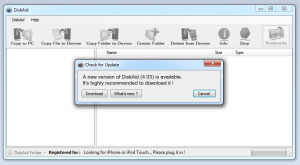

Select the VM, then click on Disks under the Settings heading to verify encryption status in the portal. Get-AzVmDiskEncryptionStatus -ResourceGroupName 'MyVirtualMachineResourceGroup' -VMName 'MySecureVM' Verify with Azure PowerShell by using the Get-AzVmDiskEncryptionStatus cmdlet. az vm encryption show -name "MySecureVM" -resource-group "MyVirtualMachineResourceGroup" Verify with the Azure CLI by using the az vm encryption show command. Click Purchase to deploy a new IaaS VM where encryption is enabled.Īfter you deploy the template, verify the VM encryption status using your preferred method: Select the subscription, resource group, resource group location, parameters, legal terms, and agreement. On the Resource Manager template, click Deploy to Azure. The template creates a new encrypted Windows VM using the Windows Server 2012 gallery image. You can enable disk encryption on new IaaS Windows VM from the Marketplace in Azure using a Resource Manager template.
DISK AID WINDOWS HOW TO
For more information about how to back up and restore encrypted VMs, see Back up and restore encrypted Azure VM.Įncrypting or disabling encryption may cause a VM to reboot.Įnable encryption on new IaaS VMs created from the Marketplace Once a backup is made, you can use the Set-AzVMDiskEncryptionExtension cmdlet to encrypt managed disks by specifying the -skipVmBackup parameter.

VMs with managed disks require a backup before encryption occurs. Backups ensure that a recovery option is possible if an unexpected failure occurs during encryption. You should take a snapshot and/or create a backup before disks are encrypted.


 0 kommentar(er)
0 kommentar(er)
